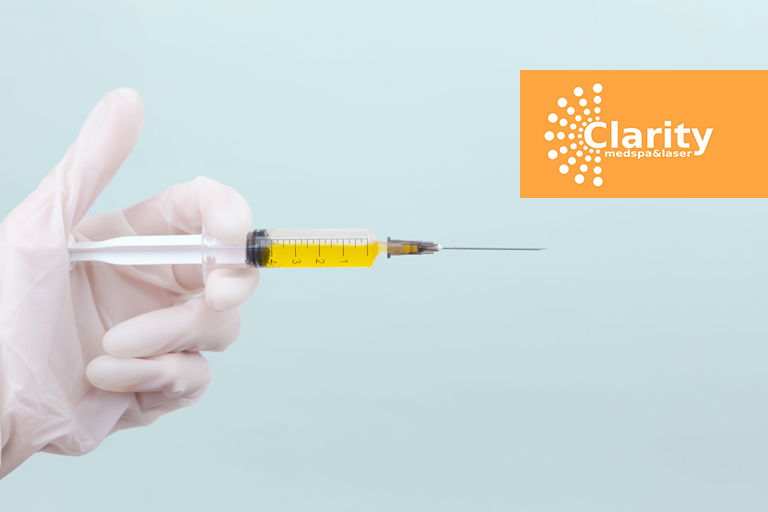Do You Need PRP Treatment for Hair Loss?
Hair loss is more common than you might think. According to the Canadian Hair Loss Foundation, Androgenetic alopecia, often known as male pattern baldness, affects about 30% of men by the age of 30 and 50% by the age of 50. Many men and women who are experiencing balding or thinning hair seek medical advice.
Historically, doctors would prescribe medicine or perform a hair transplant procedure to reverse the effects of hair loss. However, these procedures may have substantial risks and negative effects, including longer recovery time, itchiness, and even sexual dysfunction. Luckily, a new advancement in medicine led to a new method called platelet-rich plasma (PRP) treatment with significantly lower side effects.
The procedure is growing in popularity, but you must still be aware of the risks and know if you are a good candidate for the treatment.
What Is PRP Treatment for Hair Loss?

PRP (platelet-rich plasma) is a treatment used by doctors to speed up the healing process in various parts of the body. Platelets are a component of blood, just as red and white blood cells. Platelets are some of the body’s “first responders” that come to suppress bleeding and accelerate healing when a person sustains a cut or wound. Researchers hypothesize that extracting concentrated platelets and injecting them into damaged bodily locations might speed up healing.
PRP treatment has long been utilized to treat musculoskeletal and, more recently, skin disorders. PRP has recently gained traction as a possible hair loss treatment. When injected deep into the scalp to reach the bottom of the hair follicle, it may stimulate the repopulation of cells known as dermal papilla cells, which play a vital role in hair growth. PRP can also help to grow new blood vessels in the scalp, allowing nutrients and oxygen to flow freely. That’s how you’ll notice more hair growth.
Who Can Benefit From Platelet-Rich Plasma Therapy?

People who can benefit from PRP treatment include:
Balding men
Women who have lost or thinned their hair due to menopause
People who have been losing hair for less than five years; any longer and the hair follicles will have shrunk and thinned to the point where encouraging growth may no longer be effective.
Causes of Hair Loss
Hair loss can be caused by a variety of factors, including:
- Family’s history or prevalence of alopecia areata
- Medical history, including previous illnesses and surgeries
- Any medications you’re taking that could cause hair loss as a side effect
- Hair products you use regularly, as well as information on how you care for your hair
- Malnutrition and deficiencies
What to expect during PRP Procedure

A common process of PRP treatment for hair loss is as follows:
- Blood is drawn from a vein in the arm by a medical expert.
- The blood is spun in a centrifuge to separate its constituents.
- Using a syringe, a medical expert removes the platelets.
- Platelets are injected into specific places of the scalp by a doctor.
The entire procedure could take up to an hour, and multiple sessions may be required. After getting PRP treatment, most people can resume their normal activities without any restrictions.
Risks of PRP Treatment for Hair Loss
the procedure, make a list of all medications you’re taking, including supplements and herbs. Many clinics would advise avoiding PRP for hair loss at your initial visit if you:
- are taking anticoagulants
- are a chain smoker
- have a history of drug or alcohol abuse
You may also be turned down for treatment if you’ve been diagnosed with one of the following conditions:
- Acute or chronic infections
- Cancer
- Chronic liver disease
- Chronic skin disease
- Platelet dysfunction syndromes
- Low platelet count
- Thyroid disease
Side Effects of PRP Treatment for Hair Loss
Your odds of negative side effects from PRP therapy is very low because the treatment involves injecting your own blood into your scalp. But, any therapy involving injections entails the possibility of temporary side effects, such as:
- Slight discomfort at the injection site
- Tenderness of the scalp
- Swelling
- Headache
- Itching
- Bruising or bleeding at the injection site
- Tissue scars
There’s also the possibility that you may have an adverse reaction or allergy because the topical numbing used in the therapy. If you opt to undergo PRP therapy for hair loss, inform your doctor ahead of time about your anaesthetic intolerance(s).
How Long Does It Take For PRP to Work On Hair?

Patients usually require at least 3 to 4 sessions at 4-week intervals. Your aesthetician may want you to return for follow-up treatments after 6 months and then 12 months from the initial four sessions. These follow-up appointments help to preserve the treatment’s favourable benefits and allow you to witness continuous improvements in hair growth.
The number of sessions and the time it takes to see benefits are determined by a variety of factors, including:
- Your body’s reaction to the treatment; the treatment may take effect sooner if you have more active hair follicles and you may also require fewer sessions if you have fewer balding spots
- The number of inactive follicles or those that can no longer produce hair
- Your blood’s platelet concentration, growth factors, and other healing components
- The qualifications, knowledge, and experience of those who will be treating you.
- The PRP preparation methods and kits used
- The additional treatments that may help to boost the results of the PRP therapy
Does PRP Really Regrow Hair?

Though research on PRP to treat hair loss is still in its early stages, the results have been promising. 11 studies, which included a total of 262 people with androgenetic alopecia showed a significant success rate after a PRP hair treatment. They received 4 treatments over 3 months and experienced a 30% rise in hair count. That said, PRP collection and administration procedures are now used by providers in a number of ways. More study is needed to figure out the best way to get PRP and inject it. Furthermore, additional research is needed to determine how PRP helps regrow hair and whether it may be used to treat less common types of hair loss.
If you’re concerned about hair loss, you have a few options. you can medicate, get a hair transplant surgery, or consider a PRP treatment. Consult your aesthetician to determine which treatment or treatment combination is best for you.
If you are looking for a PRP Treatment in Toronto, visit Clarity MedSpa. To learn more and get a quote for our service, call us at (416) 960-2222 today.


 Linkedin
Linkedin Facebook
Facebook  Instagram
Instagram  Twitter
Twitter  Youtube
Youtube